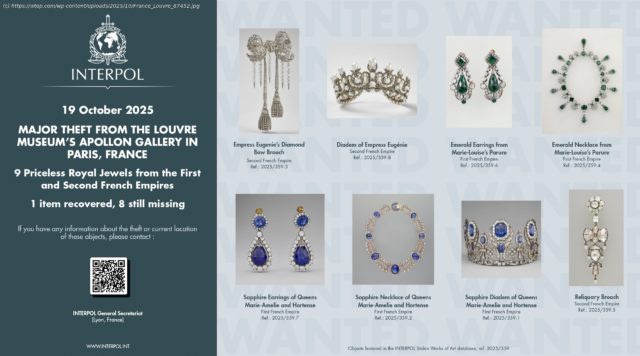NEW YORK (AP) — Seven people have been arrested in the investigation of a stunning heist at the Louvre Museum in Paris, but the lavish, stolen jewels that once…
— Seven people have been arrested in the investigation of a stunning heist at the Louvre Museum in Paris, but the lavish, stolen jewels that once adorned France’s royals are still missing.
In the days after the theft, a handful of experts warned that the artifacts valued at more than $100 million (88 million euros) could be melted or broken into parts. If done successfully, some say those smaller pieces could later go up for sale as part of a new necklace, earrings or other jewelry, without turning too many heads.
“You don’t even have to put them on a black market, you just put them in a jewelry store,” said Erin Thompson, an art crime professor at the John Jay College of Criminal Justice in New York. “It could be sold down the street from the Louvre.”
Thompson and others say that this has become increasingly common with stolen jeweled and metal goods, noting that it’s a way thieves can try to cover their tracks and make money. It’s not like someone could publicly wear one of France’s stolen Crown Jewels — and finding a market to sell the full artifacts would be incredibly difficult after “everyone and their sister” has seen photos of them over the last week, said Christopher Marinello, a lawyer and founder of Art Recovery International.
French prosecutor Laure Beccuau made a plea Wednesday to whoever has the jewels.
“These jewels are now, of course, unsellable … Anyone who buys them would be guilty of concealment of stolen goods,” she warned. “There’s still time to give them back.”
“By breaking them apart, they will hide their theft,” Marinello said, adding that these items could become even more “traceless” if they’re taken out of France and through jewel cutters and robust supply chains in other countries.
Still, such pieces are often sold for a fraction of the value of what was stolen — due to their smaller size, but also because melting or breaking down high-profile items removes the historical worth.
It isn’t a simple process.






